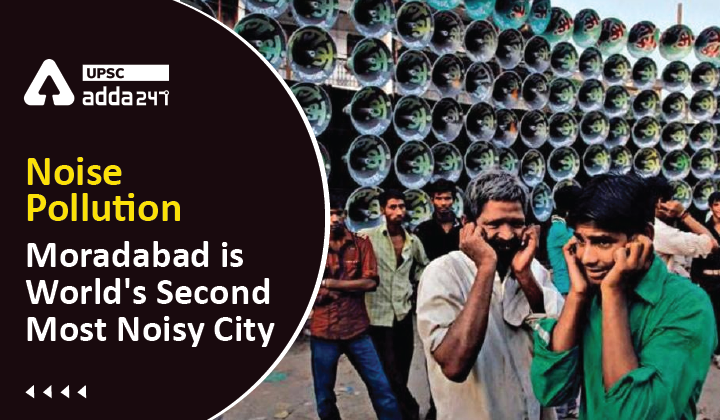Table of Contents
Noise pollution UPSC: Relevance
- GS 3: Conservation, environmental pollution and degradation, environmental impact assessment.
Noise pollution: Context
- Recently, UN Environment Programme (UNEP) has released the fourth edition of the Frontiers Report titled Noise, Blazes and Mismatches: Emerging Issues of Environmental Concern.
UNEP frontier report: Noise pollution
- According to the report, Moradabad in Uttar Pradesh, at 114 db, is the second-most noise polluted city globally.
- Among the 13 south Asian cities that are highly noise polluted, five are in India.
- Noisy cities of India: Moradabad, Kolkata, Asansol, Jaipur, Delhi.
- The highest noise pollution of 119 db has been recorded in Dhaka, the capital of Bangladesh. It was followed by Moradabad in India, and the third place is Pakistan’s capital Islamabad, where the noise pollution level has been recorded at 105 db.
UNEP frontier report: When sound becomes noise pollution?
- It is to be noted that sounds with a frequency over 70 db are considered harmful to health.
- World Health Organization (WHO) had recommended a 55 db standard for residential areas in the 1999 guidelines, while for traffic and business sectors, the limit was 70 db.
Noise pollution and public health
- Unwanted, prolonged and high-level sounds from road traffic, railways, or leisure activities impair human health and well-being.
- This includes chronic annoyance and sleep disturbance, resulting in severe heart diseases and metabolic disorders such as diabetes, hearing impairment, and poorer mental health.
- Particularly affected are the very young, the elderly and marginalized communities near high traffic roads, and industrial areas and far from green spaces.
- A study in Korea showed that a 1 decibel increase in daytime sound increased the risk of cardio (heart) and cerebrovascular (related to blood flow to the brain) diseases by 0.17 to 0.66 per cent
- It is also a threat to animals, altering communications and the behaviour of various species, including birds, insects, and amphibians.
Noise pollution: Steps needed
- Urban planners should prioritize the
- reduction of noise at the source;
- investments in alternative mobility; and
- urban infrastructure that creates positive soundscapes such as tree belts, green walls, green roofs, and more green spaces in cities.
Also Read:





 TSPSC Group 1 Question Paper 2024, Downl...
TSPSC Group 1 Question Paper 2024, Downl...
 TSPSC Group 1 Answer key 2024 Out, Downl...
TSPSC Group 1 Answer key 2024 Out, Downl...
 UPSC Prelims 2024 Question Paper, Downlo...
UPSC Prelims 2024 Question Paper, Downlo...





